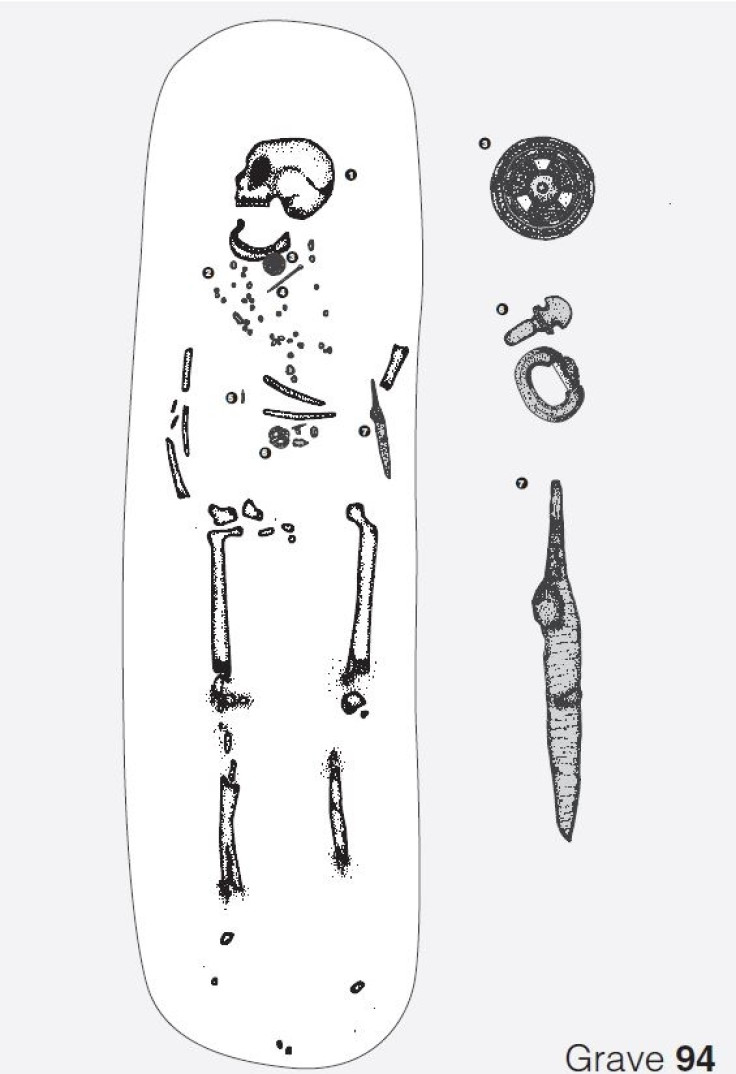Ancient burial sites show just how badly our ancestors treated older women
However, older men were buried with great honour and lots of goods.

When archaeologists Christine Cave and Marc Oxenham analysed three Anglo-Saxon burial sites, they found that women were often less respected than men in death.
Cave and Oxenham looked into the burials of 200 people dating back to the 6th century AD. They focused their attention on three cemeteries: Greater Chesterford in Essex, Mill Hill in Kent, and Worthy Park in Hampshire.
Pinpointing the exact age of a buried individual can be tricky, because past a certain point – about 50 years old – traditional methods fall short. Cave and Oxenham had to come up with new solutions in order to identify older men and women among the buried.
Their findings, titled Sex and the Elderly were published in the Journal of Anthropological Archaeology.
The average life expectancy rate at that time was around 46. When looking for individuals older than 55, the duo found that women largely outlived men.
They also found that "when the oldest three individuals from each cemetery were identified, it was observed that seven were female and two were male". These individuals were about 75 or older.
The discovery is interesting because it was long assumed women's longevity would be shorter in the 6th century, due to illness and events such as childbirth.
However, a long life didn't necessarily bring these women a higher status in their communities, as evidenced by the way they were buried.
Having identified older men and women, Cave and Oxenham compared treatment in burials to see if they differed depending on the individual's gender. They classified burials into two categories: normative and non-normative.
Non-normative burials would be described as: "burial in a reverse orientation, careless burial, the scattering of rubble over the burial, and prone [face-down] burial," which all carry negative connotations. The causes for a non-normative burial are diverse, ranging from the community being displeased with the deceased to a difference in status.
However, the researchers found that women in every age category were more prone to have an non-normative burial than men. "Only women were buried face down, or prone," and two of them looked as if they had been restrained prior to being buried. One woman aged 18-30 was buried with her children's legs still in her pelvis, for instance, and chalk rub were scattered on her baby's head – a sign of careless burial that could hold negative connotations.
Older men received greater honours in burials, being buried with goods. The quality of women's burial decreased as they aged, whereas the opposite happened for men.
The goods present in the grave also show that beauty was an important aspect of a woman's life.
"This was a society where men held most of the power (as evidenced partly by weapons in burials), and that women were admired for their beauty and their ability to bear children," Christine Cave told IBTimes UK. "Once these things have faded, their importance, or power faded. Of course this is not universal, but a general trend."
Grave goods and lifetime wealth
Only one woman was buried with great honours in Worthy Park cemetery. She was older than 75 when she died. Her grave contained a copper alloy brooch, a beaded necklace, copper belt and other objects. This suggests not all women were treated negatively or neutrally by the rest of the community. Some could achieve good status. The objects placed in the graves usually belong to the deceased in their lifetime, or to their families.
"A person without grave goods may have owned very little, and/or their surviving relatives may not have been able to afford to lose these objects to the ground," says Cave. Grave goods could also hold a more symbolic meaning: how the deceased lived their life or how they were perceived by their community. "Grave goods may also have symbolic meanings too; an amulet may indicate a 'wise woman' or 'cunning woman' or a spear may mean that the dead person was part of a particular family or lineage," she adds.
However, Cave and Oxenham note that "men have higher mortality rates, but women greater morbidity". It means that even though some women managed to live long lives, their general health was bad.






